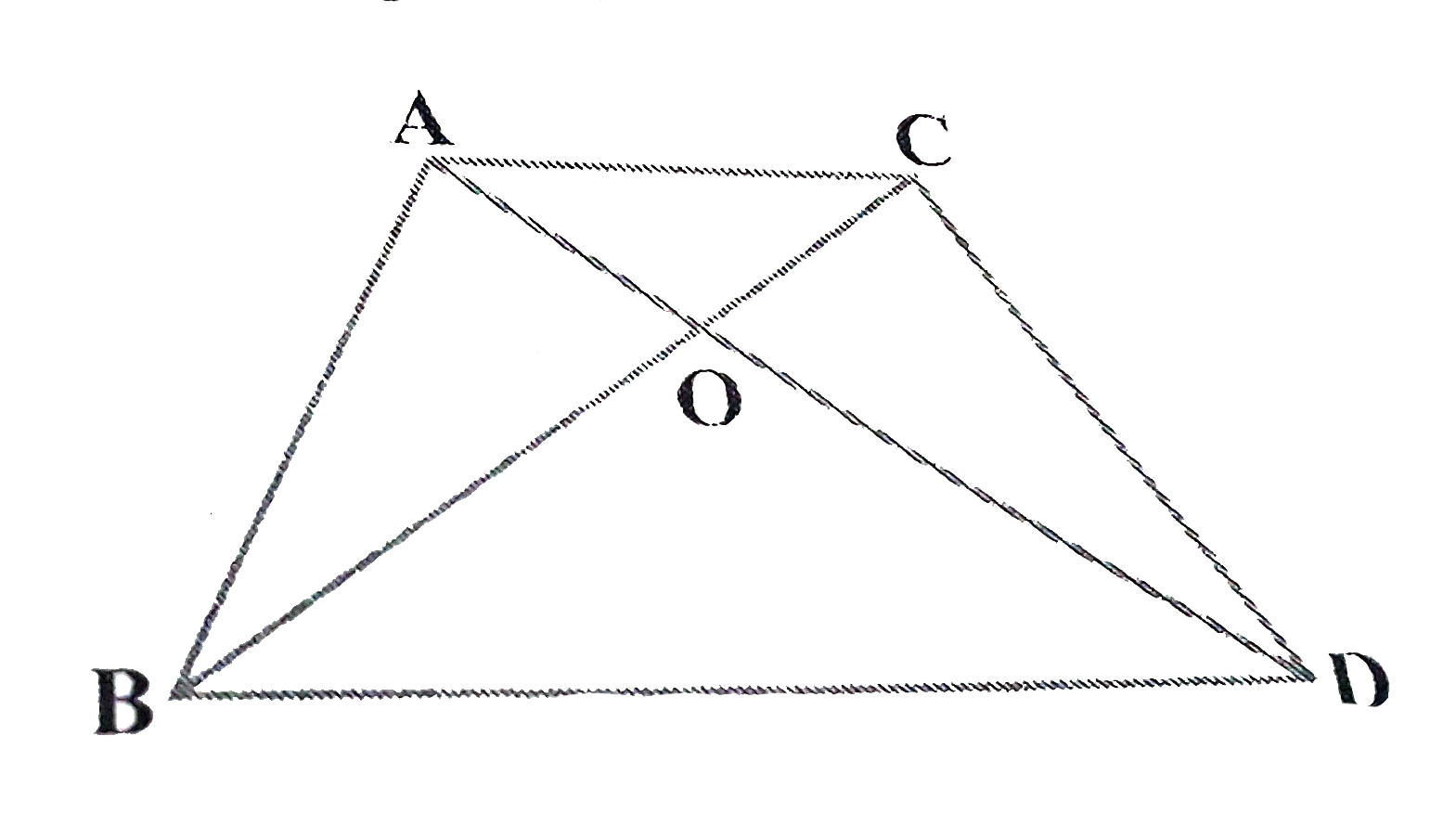ABC and DBC are two triangle on the same base BC such that A and D lie on the opposite sides of BC,AB=AC and DB =DC ,Show that AD is the perpedicular bisector of BC.
To show that line AD is the perpendicular bisector of line segment BC in triangles ABC and DBC, we can follow these steps:
1. Identify Given Information:
- We have two triangles, ABC and DBC, sharing the same base BC.
- Points A and D lie on opposite sides of line BC.
- It is given that AB = AC and DB = DC.
2. Establish Congruence of Triangles:
- In triangles ABD and ACD, we know:
- AB = AC (given)
- BD = CD (given)
- AD is common to both triangles.
- Therefore, by the Side-Side-Side (SSS) congruence criterion, we can conclude that triangle ABD is congruent to triangle ACD.
3. Use CPCTC:
- Since triangles ABD and ACD are congruent, by the Corresponding Parts of Congruent Triangles are Congruent (CPCTC), we have:
- ∠BAD = ∠CAD.
4. Consider Smaller Triangles:
- Now, consider triangles BAO and CAO, where O is the foot of the perpendicular from A to line BC.
- We know:
- AB = AC (given)
- ∠BAO = ∠CAO (because ∠BAD = ∠CAD).
- AO is common to both triangles.
- Therefore, by the Side-Angle-Side (SAS) congruence criterion, triangles BAO and CAO are congruent.
5. Apply CPCTC Again:
- From the congruence of triangles BAO and CAO, we have:
- ∠AOB = ∠AOC.
6. Linear Pair of Angles:
- Angles AOB and AOC are a linear pair (they lie on the same line BC).
- Thus, we have:
- ∠AOB + ∠AOC = 180°.
7. Set Up the Equation:
- Since ∠AOB = ∠AOC, we can write:
- ∠AOB + ∠AOB = 180°,
- 2∠AOB = 180°.
8. Solve for ∠AOB:
- Dividing both sides by 2 gives:
- ∠AOB = 90°.
9. Conclusion:
- Since ∠AOB = 90°, this means that line AD is perpendicular to line BC.
- Additionally, since O is the midpoint of BC (as shown by the congruence of triangles), AD is also the bisector of BC.
- Therefore, AD is the perpendicular bisector of BC.
- We have two triangles, ABC and DBC, sharing the same base BC.
- Points A and D lie on opposite sides of line BC.
- It is given that AB = AC and DB = DC.
- In triangles ABD and ACD, we know:
- AB = AC (given)
- BD = CD (given)
- AD is common to both triangles.
- Therefore, by the Side-Side-Side (SSS) congruence criterion, we can conclude that triangle ABD is congruent to triangle ACD.
- Since triangles ABD and ACD are congruent, by the Corresponding Parts of Congruent Triangles are Congruent (CPCTC), we have:
- ∠BAD = ∠CAD.
- Now, consider triangles BAO and CAO, where O is the foot of the perpendicular from A to line BC.
- We know:
- AB = AC (given)
- ∠BAO = ∠CAO (because ∠BAD = ∠CAD).
- AO is common to both triangles.
- Therefore, by the Side-Angle-Side (SAS) congruence criterion, triangles BAO and CAO are congruent.
- From the congruence of triangles BAO and CAO, we have:
- ∠AOB = ∠AOC.
- Angles AOB and AOC are a linear pair (they lie on the same line BC).
- Thus, we have:
- ∠AOB + ∠AOC = 180°.
- Since ∠AOB = ∠AOC, we can write:
- ∠AOB + ∠AOB = 180°,
- 2∠AOB = 180°.
- Dividing both sides by 2 gives:
- ∠AOB = 90°.
- Since ∠AOB = 90°, this means that line AD is perpendicular to line BC.
- Additionally, since O is the midpoint of BC (as shown by the congruence of triangles), AD is also the bisector of BC.
- Therefore, AD is the perpendicular bisector of BC.
Topper's Solved these Questions
- TRIANGLESBOOK - NCERT EXEMPLAR ENGLISHCHAPTER - TRIANGLESEXERCISE - SHORT ANSWER TYPE QUESTIONS
11 Videos
- STATISTICS AND PROBABILITYBOOK - NCERT EXEMPLAR ENGLISHCHAPTER - STATISTICS AND PROBABILITYEXERCISE - LONG ANSWER TYPE QUESTIONS
12 Videos
- VOLUME AND SURFACE AREABOOK - NCERT EXEMPLAR ENGLISHCHAPTER - VOLUME AND SURFACE AREAEXERCISE - LONG ANSWER TYPE QUESTIONS
8 Videos
Similar Questions
InΔABC,AB=ACandD is a piont in side BC such that AD bisect angle BAC.
Show that AD is perpendicular bisector of side BC.
View SolutionTriangles ABC and DBC are two isosceles triangles on the same base BC and their vertices A and D are on the same side of BC. If AD is extended to intersect BC at P, show that:
ΔABP≅ΔACP
View SolutionTriangles ABC and DBC are two isosceles triangles on the same base BC and their vertices A and D are on the same side of BC. If AD is extended to intersect BC at P, show that:
AP bisects angle BAC and BDC.
View SolutionABC and DBC are two isosceles triangles on the same base BC (see Fig. 7.33). Show that∠ABD =∠ACD

View Solution△ABCand△DBC are two triangles on the same base BC. A and D lies on opposite sides of BC. Prove that ar(△ABC)ar(△DBC)=AODO
View SolutionIn figure ABC and DBC are two triangles on the same base BC. If AD intersects BC at O, show that ar(ABC)ar(DBC)=AODO.

View SolutionIn ΔABC,AB=AC.D,Eand F are mid-points of the sides BC, CA and AB respectively . Show that :
AD is perpendicular to EF.
View SolutionΔABCandΔDBC are on same base BC and their vertices A and D are on opposite sides of BC. It is given that:
area of ΔABC= area of ΔDBC
Prove that BC bisects the line segment AD.
View SolutionΔABC is a right triangle right angled at A such that AB=AC and bisector of ∠C intersects the side AB at D. Prove that AC+AD=BC.
View SolutionIf D id the mid-point of the side BC of a triangle ABC and AD is perpendicular to AC , then
View Solution
